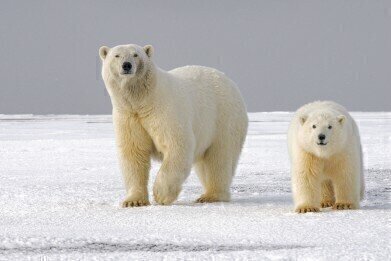Water/Wastewater
Will Pollution Drive Polar Bears to Extinction?
Feb 19 2015
It’s common knowledge that climate change is an enormous threat to polar bears, causing their hunting and breeding ground to literally melt from under their feet. But it’s not the only ominous presence damaging every bears’ chances of survival. There’s a chemical enemy lingering in their environment, and it’s looking to break some bones.
The culprits are known as polychlorinated biphenyls (PCBs). They enter the food chain at the bottom and work their way up. When they are finally ingested by polar bears, PCBs have an adverse effect on the density of their bones.
How do PCBs damage polar bears?
PCBs dig deep, stowing away in the polar bear’s fat reserves to inflict gradual damage. But the most significant danger caused by PCBs is to the bone found in the polar bear’s penis, known scientifically as a “baculum”. Despite being primarily thought of as an evolutionary leftover, without it the bear could be left completely unable to mate.
Scientists have discovered a direct correlation between the mineral density of the bacula and the concentration of PCBs in polar bear body fat across different sub-populations. As the levels of PCBs rise, the density of the baculum flops and breakages become more common. As painful as a broken baculum may sound for a single polar bear, the effect of multiple broken baculum on polar bear reproduction could wound the entire species a lot more.
But PCBs are banned now, so how are they affecting polar bears in 2015?
In their heyday PCBs were used widely, lurking in many household items like paint, wire coating and wooden floor finishes. The problem is that the pollutant is notoriously difficult to shift. Think of it like this: a fish swallows plankton laced with a minuscule amount of PCB that embeds itself into the fish’s flesh. When that fish is eaten by a seal the PCB transfers to the new host. But the seal doesn’t eat just one fish – it feasts on fish, causing the concentration of PCB stored in its fat to magnify. The bear, at the peak of the food chain, eats the seal, plus dozens more, resulting in an almost exponential growth of concentration as PCBs rise through the ranks.
How much proof is there?
Seeing a link between two things is one thing, but proving they are linked is completely different – especially when it comes to the possible effects of pollution. PCBs are not the only pollutants that have navigated their way to the arctic and while the cause is less than definitive, the size of the polar bears baculum problem is just as unknown. It’s almost impossible to get close enough to a sick polar bear to properly investigate which means the problem could potentially be much bigger than currently thought.
Despite the doubts, what’s important is the issue this study raises about pollution, particularly in the arctic where scientific discovery (and scientific unknowns are) still ripe.
Further reading
Much of the current understanding of how environmental pollutants affect organisms comes from experimental data on individual contaminants. However, researchers from the Fram Centre in Norway believe that the combined effect of several substances could be more severe than the sum of their individual effects. They are now studying the fish populations in the lakes of a remote Norwegian island to see whether this “cocktail effect” exists. You can read more about this topic in: Investigating Pollution in the Arctic.
Events
Apr 22 2024 Hannover, Germany
Apr 23 2024 Kuala Lumpur, Malaysia
Apr 24 2024 Sao Paulo, Brasil
May 05 2024 Seville, Spain
May 13 2024 Munich, Germany













